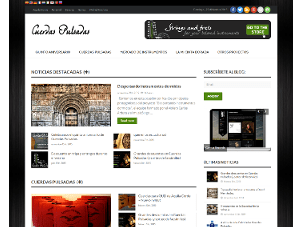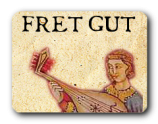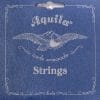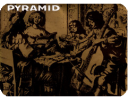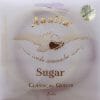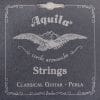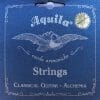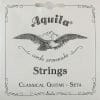Brandon Acker is a classical guitarist and specialist on early plucked instruments such as the lute, baroque guitar and theorbo.
His latest passion has been to run his successful Youtube channel which now has over 350,000 subscribers and 22 million views.
His channel provides educational content about early plucked instruments as well as guitar tips and artistic performance videos. He is an excellent popularizer of early plucked instruments, early music, and topics such as playing guitar without nails and with gut strings.
His interest in education has led him to found a new online music school with his wife called Arpeggiato which offers lessons in “All things that go pluck.” Recently he has released his first online classical guitar course for beginners at https://classicalguitar-pro.com
I saw what seems to be your first early music video on youtube playing the theorbo. How did you start playing early music?
I never had the intention to be a classical musician, let alone an early music specialist. Like many other guitarists, my teenage dream was to be a rockstar. I played in many rock bands and produced CDs in my home studio with friends. The plan was to go to college to learn to be a sound engineer to have a day job related to my career playing in a rock band.
However, it turned out that even as a sound recording major, I needed to take lessons on an instrument and they only offered jazz or classical guitar. I could fake a little bit of Spanish fingerstyle guitar on my nylon string and so I decided to go that route. To my surprise, I fell in love with classical guitar and would go on to do two degrees in classical guitar performance.
While attending these degrees, I found my way to an early music festival in my hometown of Madison, Wisconsin. Suddenly, I was holding lutes, theorbos and Baroque guitars for the first time. I was struck by their beauty and was trying, with mixed results, to use my classical guitar technique to play pieces I knew by Dowland and Sanz. The environment was warm and encouraging and the teachers were some of the leading professionals in the USA.
After attending for several years in a row, I finally bought a second-hand lute. Before I knew it, I was being asked to play concerts with various groups. I could barely tune my lute and had no teacher but I did my best to roll with the punches and every concert was, and still is, an educational experience.
You play different renaissance and baroque instruments, how did you start with each of them?
I first got my hands on a variety of early instruments at an early music festival in Madison Wisconsin but I hadn’t take the study of the instruments too seriously until I owned my own. It’s a funny story actually, I got my first Renaissance lute thanks to a friend who worked at a music store in Chicago. An elderly woman had found a lute in her attic from the 80s and she didn’t know it was there. She wanted to sell it but the store didn’t really know what to do with the instrument either. Luckily, my friend working their called me up and said “get over here now!” We discovered the maker of the lute and that it was valued around $2,000. I told her I was saving for a theorbo and couldn’t afford it but I wish I could. She asked “but do you know what it is? Would you use it and perform in concerts?” I said “absolutely!” She said “In that case, just pay me whatever you can afford.” I gave her all of the extra cash I had at the time which was only $600 and from there on out I was officially a lute player!
The instrument I really had my eyes set on was a theorbo. I played Baroque guitar (borrowed from my teacher) in a Monteverdi opera and the theorbo player was also a guitarist. He convinced me that that is the instrument I really need to get if I want to have a performance career as an early music plucker. I also found that playing single strings with nails and a similar guitar tuning buried within the strings made it much more intuitive than other lutes. I bought my theorbo second-hand from another player in Chicago.

The next instrument I knew I wanted was a Baroque guitar. I had played my teachers in several concerts and an opera in college and knew that I could intuitively play it as a classical guitarist. I also knew that it was a great continuo instrument for strumming and was craving to add that color to my continuo playing. I was on tour in England with a Chicago opera theater and while in York I stumbled upon a music store called the Early Music Shop. I was absolutely stunned to see lutes, baroque guitars and viola da gambas hanging in the store window. That is a sight you don’t see in the U.S. So I bought a cheap Baroque guitar there which barely produced any sound but it allowed me to learn the repertoire. I very quickly upgraded to a custom made guitar by the great Spanish builder Julio Castaños Soler.
Throughout your learning process how have your views about early music played on the guitar changed after switching to these instruments?
I could talk about this topic for hours but I’ll do my best to summarize.
Playing historical instruments has profoundly informed my understanding of early music. If one wants to speak French quickly and with a good accent, the best way is to experience total immersion speaking French in France. For me, the same is true with early instruments. Performing Sanz on a Baroque guitar, Weiss on Baroque lute, or Dowland on a Renaissance lute from manuscripts, and with historical techniques, changes the way one perceives and plays that music for the better.
When I was only a classical guitarist in college, I did play Bach, Sanz, Dowland and other early composers but I didn’t understand the music. I did what many classical guitarists do in this situation and I applied the tools of expression I had learned from playing Tárrega and other Romantic guitar composers to the early works in an attempt to be musical. I was never totally satisfied with the result but felt it was better than playing without feeling.
While I’m a huge advocate of guitarists playing early music, I have to admit that, for me, early music on the classical guitar is now less enjoyable than on historical instruments. However, I don’t think this should be too surprising. When music is written explicitly for the idioms of one instrument, that instrument will necessarily yield the most natural musical results. When a classical guitarist plays Sanz or Weiss, they will likely have to work ten times harder than they would if they were to simply play from the original tab on the original instrument and I think that difficulty takes a toll on the musical result.
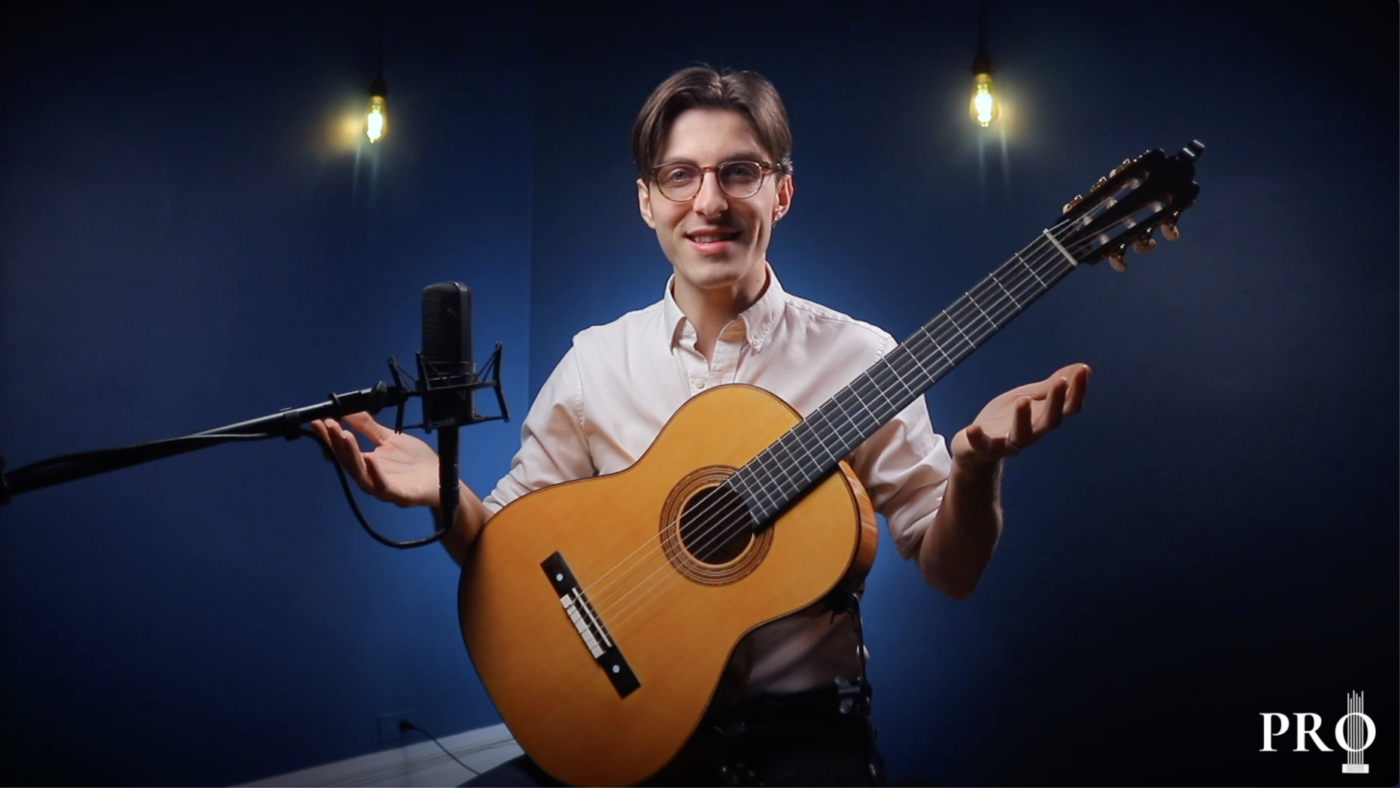
I must also confess that I wish classical guitarists would take HIP (historically informed performance) more seriously. I can understand why Andrés Segovia played early composers like Robert de Visée so unstylistically given the time in which he existed. If anything I thank Segovia for popularizing so much Renaissance and Baroque music in the 20th century. However, I still hear new recordings being made today of Bach, Visée, Sanz and others which clearly are imitating Segovia’s unstylistic recordings instead of using the wealth of knowledge we have today about how early music was likely performed.
Through my online music school(Arpeggiato.com), YouTube channel, and new online classical guitar course (https://classicalguitar-pro.com), I am trying to do my part to inspire those who love classical guitar and early music to be more “HIP.”. I say all of this not to be some sort of purist but because I believe that when early music is performed in a historically informed way, the music is infinitely more rich, interesting and moving.
What about your technique? I saw your process of using gut strings and cutting your nails. How did you feel about breaking tradition with what seems to be controversial topics for guitarists?
I also got the feeling that playing without nails seemed controversial in the guitar world but after a little research, this seemed downright silly. Sor, Tárrega, Carcassi, Pujol and many other classical guitarists played without nails. It is a completely historical, valid and beautiful way to approach the guitar. After learning this, I felt like more guitarists needed to know. I’ve met many guitar students who were told by their teachers that “all serious classical guitarists play with nails.”
For me, the experience was completely fascinating. I had to completely change my technique to play without nails. I felt more direct, personal control over the string. Caressing the string with a soft surface, rather than the hard surface of the nail, proved to be a gratifying experience. The warmth and intimacy of the tone makes it clear why some players preferred it.
I was happy to record a full recital of French Baroque music on gut strings without nails as well as a lute duet program with lutenist Cameron Welke. However, after concerts came back in person, my life as an active continuo player on the theorbo convinced me to go back to nails (as many did at the time). I think I’ll likely go back on forth depending on the instruments and repertoire I play.
Who inspired you while listening to their recordings or concerts and who guided you while learning?
When it comes to early plucked instruments, I felt especially inspired by listening to Xavier Díaz-Latorre. I saw him live at an early music festival and that was still one of the best recitals I’ve ever seen in person. Since Covid began, I’ve been lucky enough to study with him for two hours a week and I can definitely say that he is now had more influence on the way I approach playing early music than any other.
The restrictions during the Covid pandemic have caused great difficulties for performers and students. How is Arpeggiato helping students worldwide to improve their skills?
My wife and I created Arpeggiato, an online music school for plucked instruments, in August of 2020 and part of our motivation was to provide work for music teachers who were struggling, as well as lessons for those who could no longer take them in person due to COVID. It was amazing to see the school go from an idea in our kitchen in August, to a school with 60 students and a dozen teachers from around the world just months later.

Thankfully, we’ve discovered that online lessons aren’t just some cheap temporary solution to in-person lessons. Rather, thanks to our private Facebook group for students, monthly masterclasses/workshops on Zoom, and weekly private lessons, we’ve seen the birth of a global community of pluckers online! And the progress the students are making appears to be just as significant as in-person lessons can provide.
I think in many ways, online lessons are just like in-person lessons but more convenient. No matter where you live, you can instantly connect to an expert teacher on your instrument of choice. How many people have a theorbo or classical mandolin teacher in their town? Furthermore, students don’t need to commute, they can record their lessons to review later, and we provide our teachers with high-quality webcams and microphones to ensure a great audio experience.
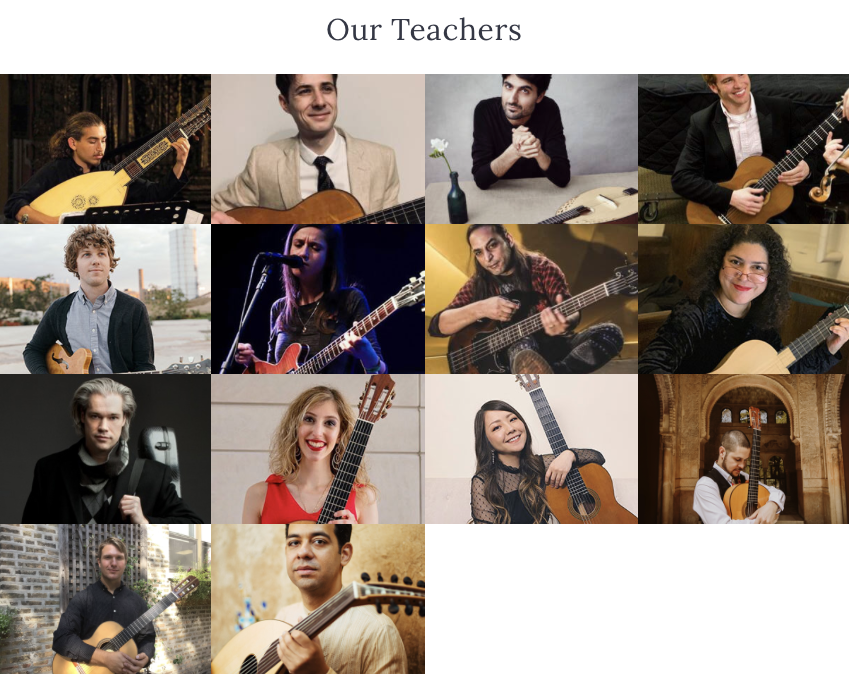
You are doing a phenomenal job showcasing different instruments on your YouTube channel. How do you think these new ways of reaching people can help bring musicians together?
Thank you! I think the educational reach of Youtube is surprisingly profound. At its beginning, Youtube seemed like a depository for cute cat videos but it has evolved into a powerful and versatile tool for learning. Everytime I make a video, I experience this power of bringing like-minded musicians or enthusiasts together.
For example, in a recent video I cut my nails for the first time and discussed the history of no-nail playing on classical guitar. Within hours after posting the video, a lively discussion started in the comment section. There were guitarists on one side of the world who had personally studied with Emilio Pujol discussing with guitarists on the opposite side of the world who had never considered no-nail playing an option! Some of the comments turned into lively debates about which sound was superior. And most importantly, people were connecting with like-minded strangers around the globe just to discuss and reflect on this esoteric topic. There are now over 1400 comments just on this video.
I also have to remind myself that most people have never seen a lute or theorbo in person and there is much work to be done to raise the awareness of their beauty. As a result, I frequently get hilarious comments from metal guitarists who are pleasantly surprised at their newfound interest in listening to lute music. It has even become a regular occurrence to hear from those who have chosen to start learning Baroque guitar or lute after watching a simple video I made in my office.
It is experiences like that which have motivated me to continue investing so much time and energy into producing educational content about these somewhat esoteric topics.
Thank you Brandon for providing such detailed and thoughtful responses to the interview.
I wish you the best for the future and keep up your excellent work.
For all our readers, here you have the link to the Youtube channel.

